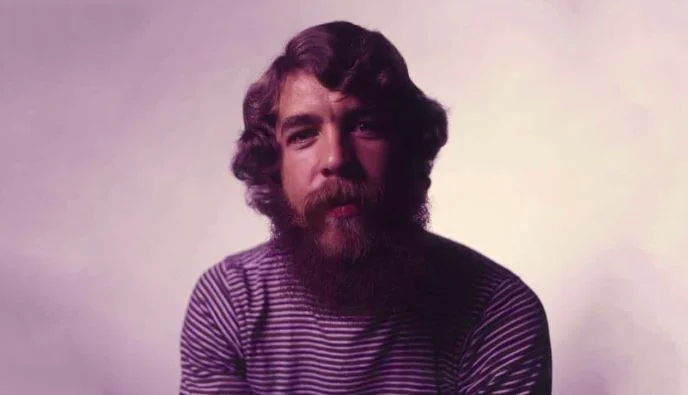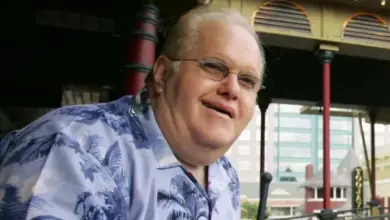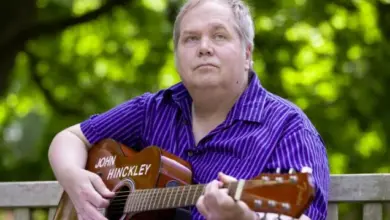
Doug Clifford Net Worth and Bio of Legendary Drummer
Doug Clifford is an iconic American musician best known as the drummer for the legendary rock band Creedence Clearwater Revival (CCR). With a career spanning over five decades, Clifford’s contributions to rock music have cemented his place in the genre’s history. As a founding member of CCR, he played a pivotal role in the band’s success, which includes numerous hit singles and albums that have left an indelible mark on the music industry. In addition to his musical achievements, Clifford’s financial success and personal life offer a fascinating glimpse into the world of rock and roll.
Doug Clifford Net Worth
| Category | Musicians |
|---|---|
| Net Worth | $20 Million |
| Birthdate | April 24, 1945 |
| Birthplace | Palo Alto, California, United States |
| Profession | American Drummer |
| Height | 5’9″ / 180cm |
| Weight | 171lbs / 78kg |
Doug Clifford’s net worth is estimated to be around $20 million. This figure highlights Clifford’s financial success and the lasting impact of his career in the music industry. His wealth is a direct result of his extensive work with Creedence Clearwater Revival (CCR) and his subsequent musical activities.
Doug Clifford Success with CCR
Creedence Clearwater Revival, formed in 1968, achieved massive success in the late 1960s and early 1970s. During this period, the band released several multi-platinum albums and hit singles that have become timeless classics. Songs like “Bad Moon Rising,” “Proud Mary,” and “Fortunate Son” not only charted high but also remain popular in various media formats. The success of these albums and singles contributed significantly to Clifford’s financial standing.
Doug Clifford Royalties and Licensing
Even after the band’s breakup in 1972, the music of CCR continued to generate substantial revenue. Royalties from ongoing airplay, streaming services, and licensing deals for television, film, and advertisements provide a steady income stream. Clifford’s share of these royalties has contributed significantly to his net worth.
Doug Clifford Touring and Reunions
Despite the breakup of Creedence Clearwater Revival, the band’s legacy has led to numerous reunion tours and tribute performances. These tours, often featuring Clifford and his former bandmates, attract large audiences and generate substantial income. The revenue from ticket sales, merchandise, and performance fees plays a crucial role in sustaining Clifford’s financial health.
Doug Clifford Tribute Projects and Performances
In addition to full-scale reunions, Clifford has participated in various tribute projects and one-off performances celebrating CCR’s music. These events often draw significant attention and contribute additional income. Clifford’s involvement in these projects underscores his ongoing relevance in the music industry.
Doug Clifford Subsequent Musical Endeavors
After Creedence Clearwater Revival disbanded, Clifford pursued several musical projects. He collaborated with other artists and bands, contributing his drumming expertise to various recordings. While these endeavors may not have matched the massive success of CCR, they still provided additional income and kept Clifford active in the music scene.
Doug Clifford Royalties from Solo Work
Clifford’s solo work and contributions to other artists’ recordings also contribute to his net worth. Though not as prominent as his CCR days, these royalties add to his overall financial picture.
Doug Clifford Legacy and Financial Impact
The enduring popularity of Creedence Clearwater Revival’s music ensures a continued flow of revenue through various channels. Clifford’s role in the band’s success is a key factor in his financial stability. The timeless appeal of CCR’s music means that Clifford benefits from ongoing exposure and income.
Doug Clifford Financial Management
Doug Clifford’s net worth reflects not only his earnings from his musical career but also his ability to manage and sustain his wealth over the years. Effective financial management and strategic investments have helped Clifford maintain his financial success long after the peak of his career with CCR.
Doug Clifford Early Life and Career Beginnings
Doug Clifford was born on April 24, 1945, in Palo Alto, California. Growing up in the heart of Silicon Valley, Clifford was exposed to a diverse and dynamic cultural environment. His family played a supportive role in nurturing his early interests, and Palo Alto’s vibrant artistic community provided a fertile ground for his budding musical talents.
Doug Clifford Early Interest in Music
From a young age, Clifford exhibited a keen interest in music. The 1960s were a transformative time for rock and roll, and the energetic rhythms of the era’s music captivated him. Influenced by the burgeoning rock scene and the increasing popularity of bands like The Beatles and The Rolling Stones, Clifford developed a fascination with drumming. He began playing drums in his early teens, taking inspiration from the rhythm-driven sounds that were reshaping the music landscape.
Doug Clifford Formative Years and Influences
During his formative years, Clifford’s exposure to various musical genres and artists played a crucial role in shaping his style. The excitement of the rock and roll explosion, combined with local music scenes and radio broadcasts, fueled his passion. His early experiences with local bands and performances helped him hone his skills and prepare for a more significant musical journey.
Doug Clifford Meeting Key Figures
A pivotal moment in Clifford’s career occurred when he met John Fogerty, Tom Fogerty, and Stu Cook during his teenage years. This meeting was a turning point, leading to the formation of the band that would eventually become Creedence Clearwater Revival. The collaboration between Clifford and these key figures was instrumental in creating a unique sound that would define the band’s success.
Doug Clifford Formation of Creedence Clearwater Revival
The synergy between Clifford, Fogerty, Cook, and Fogerty led to the formation of Creedence Clearwater Revival in 1968. The band’s unique blend of swamp rock and blues-infused rock quickly garnered attention. Clifford’s drumming provided the driving force behind the band’s energetic and distinctive sound, which played a significant role in their rapid rise to fame. The formation of CCR marked the beginning of a new chapter in Clifford’s musical career, setting the stage for his lasting impact on rock music.
Doug Clifford Creedence Clearwater Revival
Creedence Clearwater Revival (CCR) was formed in 1968 by John Fogerty, Tom Fogerty, Stu Cook, and Doug Clifford in El Cerrito, California. The band quickly distinguished itself with a unique swamp rock sound, blending elements of rock and roll, blues, and country. This distinctive style, combined with Fogerty’s powerful and emotive vocals and Clifford’s precise and energetic drumming, captured the spirit of the era and resonated with a broad audience. CCR’s sound was characterized by its straightforward, driving rhythm and Fogerty’s incisive lyrics, which often reflected social and political themes. Their debut album, “Creedence Clearwater Revival,” set the stage for their rapid rise.
The band’s meteoric success was marked by a series of hit singles and albums. Songs like “Bad Moon Rising,” “Fortunate Son,” and “Proud Mary” became anthems of the late 1960s and early 1970s, showcasing Clifford’s pivotal role in crafting the band’s infectious grooves. Albums such as “Bayou Country” and “Cosmo’s Factory” were both critical and commercial successes, earning the band a lasting legacy in rock music. CCR’s influence extended beyond their active years, impacting future generations of musicians and cementing their place in rock history.
Doug Clifford Post-CCR Career
After Creedence Clearwater Revival disbanded in 1972, Doug Clifford faced the challenge of navigating a post-CCR career. Despite the band’s immense success, Clifford’s subsequent projects did not replicate the same level of commercial achievement. He explored various musical ventures, including collaborations with other artists and participation in different bands, yet none matched the iconic status of CCR. Clifford’s post-CCR career included sessions with artists like the Don Harrison Band and participation in various musical projects, but none achieved the same widespread recognition.
In addition to these efforts, Clifford took part in several reunions and tribute projects, which helped maintain the legacy of Creedence Clearwater Revival. These reunions, such as the 1995 CCR reunion tour, allowed fans to experience the classic sound of the band live. Despite the difficulties of maintaining the same level of success, Clifford’s ongoing involvement in the music industry demonstrated his enduring commitment to his craft and kept the spirit of CCR alive for both old and new generations of fans.
Doug Clifford Personal Life
Doug Clifford has largely kept his personal life private, preferring to maintain a low profile outside of his professional endeavors. Born on April 24, 1945, in Palo Alto, California, Clifford has been married and has children, but details about his family life are seldom discussed publicly. His preference for privacy extends to his personal affairs, allowing him to focus on his music career while keeping his family life out of the spotlight.
Despite this reticence, Clifford’s passion for music remains a central aspect of his life. He actively engages in the music industry, earning respect and admiration from both peers and fans for his contributions to rock music. Clifford’s dedication to his craft and his role in one of rock’s most influential bands ensure that a loyal fan base fondly remembers him, reflecting his enduring impact on the world of music.
Doug Clifford Legacy and Impact
Doug Clifford’s legacy remains closely tied to Creedence Clearwater Revival, a band that revolutionized rock music in the late 1960s and early 1970s. Clifford’s dynamic drumming drove CCR’s innovative sound, leaving a lasting impact on the music industry. Although the band disbanded over 50 years ago, their music continues to resonate and influence today. Songs like “Bad Moon Rising” and “Proud Mary” remain staples on classic rock radio and are covered by numerous artists. Clifford’s rhythmic style helped shape the “swamp rock” genre by blending rock and roll with blues and country elements. This influence echoes in the work of many contemporary musicians. His powerful, steady beats set a standard in rock that countless drummers strive to emulate.
Furthermore, Creedence Clearwater Revival’s success has kept Clifford’s contributions in the spotlight through continued album sales, royalties, and live performances. The band’s music is frequently used in films, television, and commercials, ensuring that Clifford’s drumming reaches new audiences. The enduring popularity of CCR’s catalog confirms Clifford’s crucial role in shaping one of rock’s most beloved sounds.
Conclusion
Doug Clifford’s transformation from an aspiring musician to a rock icon illustrates a remarkable journey marked by talent, perseverance, and a deep passion for music. His career with Creedence Clearwater Revival was not just a high point but a defining moment in rock history, influencing the genre’s development and leaving a lasting imprint on fans and musicians alike. Clifford’s financial success, reflected in his substantial net worth, underscores the significant impact of his work and the continuing relevance of CCR’s music. Beyond his achievements in the music industry, Clifford’s story serves as an inspiration, demonstrating how dedication to one’s craft can lead to lasting success and influence. His contributions have not only secured his place in rock history but have also ensured that his musical legacy will be appreciated by future generations.



